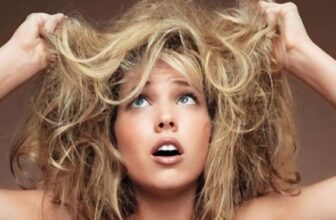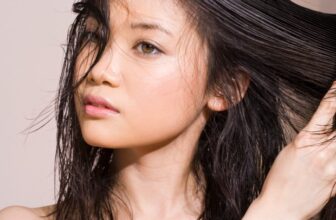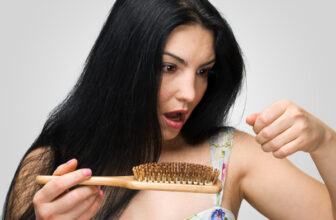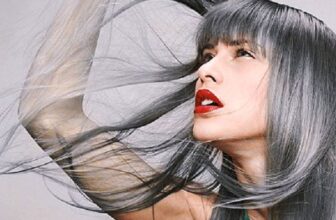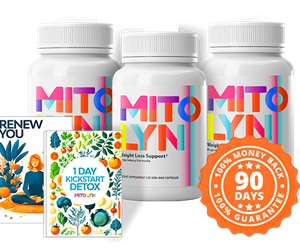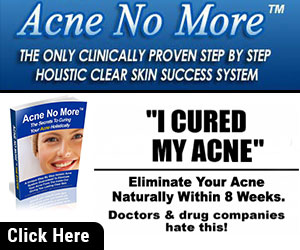
Whatever the reason, the question looms: how to remove dandruff without washing hair? Let’s face it, spotting those tell-tale white flakes on your shoulders can send you into a minor panic. Dandruff is frustrating, embarrassing, and seems to appear at the most inconvenient times – often when a full hair wash simply isn’t an option. Maybe you’re in a rush, trying to extend your wash cycle, or simply don’t have access to your usual hair care routine.
While washing is the typical and most effective way to manage dandruff over time, there are indeed steps you can take for temporary relief and immediate visual clarity. This article will delve into what causes dandruff, distinguish it from dry scalp, and, most importantly, provide actionable strategies for those moments when shampoo isn’t an option.
Oh No! Dandruff, Why Me?

That awful moment when you catch a glimpse of your reflection or notice flakes dusting your dark clothing. Dandruff, or seborrheic dermatitis of the scalp, is incredibly common, affecting roughly half of the adult population. It’s characterized by flaky, sometimes itchy, skin on the scalp. While not contagious or serious, it can significantly impact self-esteem and comfort. The urgency to make those flakes disappear, especially between washes, is completely understandable.
Dandruff vs Dry Hair, What’s the Difference?
It’s easy to confuse flaky scalp caused by dryness with actual dandruff, but they have different origins and appearances. Understanding the distinction is key to treating the issue effectively, whether you’re washing your hair or seeking temporary fixes.
Here’s a quick breakdown:
- Dandruff (Seborrheic Dermatitis):
- Appearance: Flakes are typically larger, yellowish-tinged, and look oily or waxy.
- Scalp Feel: Scalp is often oily, itchy, and can appear reddish or inflamed.
- Cause: Primarily caused by a reaction to Malassezia globosa, a common fungus that lives on the scalp, feeding on sebum (natural oils). This reaction leads to accelerated skin cell turnover and clumping.
- Improvement with Moisturizers: Generally not improved by simple moisturizers; requires antifungal or anti-inflammatory treatments.
- Dry Scalp:
- Appearance: Flakes are smaller, whiter, and look dry and powdery. They tend to fall off easily.
- Scalp Feel: Scalp feels dry, tight, and itchy. There’s typically no redness or inflammation.
- Cause: Lack of moisture on the scalp due to factors like dry air (especially in winter), excessive washing, harsh hair products, or simply not drinking enough water.
- Improvement with Moisturizers: Often improves significantly with moisturizing oils, conditioners, or leave-in treatments.
If your flakes are oily or yellowish and your scalp feels greasy despite the flakes, it’s likely dandruff. If the flakes are small, white, and your scalp feels tight and dry, it’s probably a dry scalp issue. While this article focuses on dandruff, some temporary methods might offer slight relief for dry scalp flakes too.
What Causes Dandruff in Hair?
While the exact reasons aren’t fully understood and can vary from person to person, several factors contribute to the development and flare-ups of dandruff:
- Malassezia globosa Fungus: As mentioned, this omnipresent fungus breaks down sebum on your scalp, producing oleic acid. Many people are sensitive to oleic acid, which triggers their skin cells to reproduce faster than usual, leading to flaking.
- Excess Sebum Production: Having an oily scalp provides more food for the Malassezia fungus, potentially worsening the issue.
- Individual Sensitivity: Some people are simply more reactive to the presence of Malassezia than others.
- Hormonal Changes: Dandruff often starts after puberty and can be linked to hormonal fluctuations.
- Stress: High-stress levels can weaken the immune system, allowing the fungus to thrive and causing flare-ups.
- Diet: While direct links are debated, some people find that diets high in sugar or unhealthy fats can exacerbate symptoms.
- Certain Medical Conditions: Conditions like Parkinson’s disease, eczema, or a weakened immune system can make individuals more prone to dandruff.
- Infrequent Washing: Not washing your hair often enough can lead to a buildup of oil and skin cells, providing a better environment for the fungus. (This is where the “how to remove without washing” challenge comes in!).
- Sensitivity to Hair Products: Some ingredients in shampoos, conditioners, or styling products can irritate the scalp and cause flaky skin, though this is often contact dermatitis or a separate sensitivity rather than classic dandruff.
Does Olive Oil Help for Dandruff in Hair?
This is a common home remedy question. Olive oil can help a dry scalp by providing moisture. However, when it comes to dandruff caused by Malassezia, using olive oil can be a double-edged sword.
- Potential Benefit: Olive oil is a good moisturizer and can help soothe a dry, itchy scalp component that might accompany dandruff (especially if your scalp is irritated from scratching). It can potentially help loosen existing flakes, making them easier to remove.
- Potential Drawback: Olive oil is high in oleic acid. Remember that Malassezia globosa feeds on sebum and produces oleic acid, which irritates sensitive scalps. Applying additional oil, particularly one high in oleic acid like olive oil, could potentially provide more food for the fungus and worsen the dandruff for some individuals.
Conclusion: While some people might find limited temporary relief using a very small amount of olive oil or another light carrier oil (like fractionated coconut oil) to loosen flakes, it’s generally not recommended as a primary treatment for true dandruff. It’s unlikely to address the fungal cause and could potentially exacerbate it for susceptible individuals. It’s much better suited for treating a genuinely dry scalp.
Ok, How to Remove Dandruff From Hair Instantly?
This is the core question for those moments when a shower isn’t happening. While you can’t magically cure dandruff without treating the underlying cause (which usually involves medicated shampoos used regularly), you can take steps to temporarily remove visible flakes and soothe the scalp between washes.
Here are several methods focusing on how to remove dandruff without washing hair:
- Gentle Brushing:
- How it helps: This is perhaps the simplest and most effective immediate solution for visible flakes. Brushing helps to physically dislodge flakes that are sitting on the hair strands or loosely attached to the scalp.
- Technique:
- Choose a clean brush, preferably with natural bristles which can be gentler.
- Lean forward over a sink or towel to catch falling flakes.
- Start brushing from the scalp, working the brush through the hair length. Focus on areas where flakes are most visible.
- Brush section by section.
- Clean your brush afterward to avoid redistributing flakes and oils next time.
- Caution: Be very gentle. Aggressive brushing can irritate the scalp, potentially worsening inflammation and itchiness, which can lead to more flakes. Avoid scratching your scalp with the brush bristles.
- Use a Dry Shampoo or Scalp Refresher Spray (Look for Specific Ingredients):
- How it helps: Standard dry shampoos absorb oil, which can sometimes make flakes less noticeable if they’re oily. However, some dry shampoos or scalp sprays are formulated with ingredients that can actually help manage dandruff symptoms between washes.
- Look for ingredients like:
- Salicylic Acid: Helps exfoliate the scalp and loosen flakes.
- Tea Tree Oil: Has natural antifungal properties.
- Zinc Pyrithione or Selenium Sulfide: These are the active ingredients in many medicated shampoos; finding them in a leave-in or spray format can offer temporary treatment.
- Technique:
- Part your hair in sections, focusing on areas prone to flaking.
- Spray the product directly onto the scalp from the recommended distance (usually 6-8 inches).
- Gently massage into the scalp with fingertips.
- Allow it to dry or work as directed.
- You can gently brush through afterward to remove loosened flakes and distribute the product.
- Caution: Ensure the product is designed for scalp use. Avoid spraying too much, as buildup can occur. If using a DIY tea tree oil mixture, always dilute it heavily with a carrier oil (like jojoba or almond oil) or water, as pure tea tree oil is too potent for the scalp and can cause irritation. A safe dilution is typically 2-5% tea tree oil.
- Spot Treat with Witch Hazel:
- How it helps: Witch hazel is a natural astringent and anti-inflammatory. It can help reduce oiliness and soothe scalp irritation, which might temporarily decrease flaking and itching in specific spots.
- Technique:
- Apply a small amount of alcohol-free witch hazel onto a cotton ball or pad.
- Gently dab the cotton ball directly onto flaky or itchy areas of the scalp.
- Do not rub aggressively.
- Allow it to air dry.
- Caution: Use alcohol-free witch hazel to avoid drying out the scalp excessively. This is a very temporary fix and won’t treat the underlying fungal issue.
- Utilize a Clean Towel:
- How it helps: For flakes mainly sitting on the surface of the hair, a clean, dark towel can be surprisingly effective for a quick visual clean-up.
- Technique:
- Lean forward over a sink or floor.
- Wrap the clean towel loosely around your shoulders.
- Gently shake or ruffle your hair over the towel.
- You can also gently pat the towel onto the hair strands to lift flakes.
- Caution: Avoid rubbing the towel against your scalp, as this can cause friction and irritation.
- Consider a Lint Roller (Use with Extreme Caution):
- How it helps: This is a last-resort, purely cosmetic fix for flakes visible on the hair surface.
- Technique:
- Use a fresh, clean lint roller.
- Gently roll only over the surface of the hair strands where flakes are visible.
- Move slowly and avoid pressing down.
- Caution: NEVER use a lint roller directly on your scalp. It can pull hair, cause irritation, and is not hygienic for skin contact. This method removes flakes from the hair shaft but does nothing for the scalp or the underlying cause. Use this only for emergency visual touch-ups on the hair length.
- Scalp Massager (Gentle, Dry):
- How it helps: Using a handheld scalp massager (the kind with blunt silicone or rubber bristles) gently on a dry scalp can help loosen flakes.
- Technique:
- Lean over a sink or towel.
- Using light to moderate pressure, move the massager in small circles or back-and-forth motions over the scalp.
- Focus on flaky areas.
- Brush or towel off dislodged flakes.
- Caution: Be gentle. Avoid pressing too hard or dragging the massager, which can scratch or irritate the scalp. Ensure the massager is clean.
Important Note: These methods are for temporary, visual relief and helping to manage appearance between washes. They do not treat the root cause of dandruff. For effective long-term control, you will need to use an anti-dandruff shampoo containing active ingredients like Zinc Pyrithione, Selenium Sulfide, Ketoconazole, or Coal Tar as directed by a dermatologist.
Beyond Instantly: Managing Dandruff Even Without Daily Washing
If you don’t wash your hair daily (which is common and often recommended for hair health), you can still take steps to manage dandruff effectively between washes:
- Regular Scalp Brushing: Even if you’re not removing instant flakes, gentle daily brushing helps to loosen flakes and distribute natural oils, promoting overall scalp health. Just remember to keep your brush clean.
- Maintain Scalp Hygiene: Even without shampoo, ensure your scalp gets some air. Avoid wearing tight hats for extended periods.
- Anti-Dandruff Leave-In Treatments: Some brands offer scalp serums, tonics, or leave-in treatments with anti-fungal or exfoliating properties that can be applied directly to the scalp between washes. Follow product instructions carefully.
- Healthy Lifestyle: Manage stress through techniques like meditation or yoga. Eat a balanced diet. These contribute to overall health, including scalp health.
- Clean Your Hair Tools: Regularly clean your brushes, combs, and any scalp massagers to prevent transferring oil, skin cells, and fungus back to your scalp.
When to Seek Professional Help
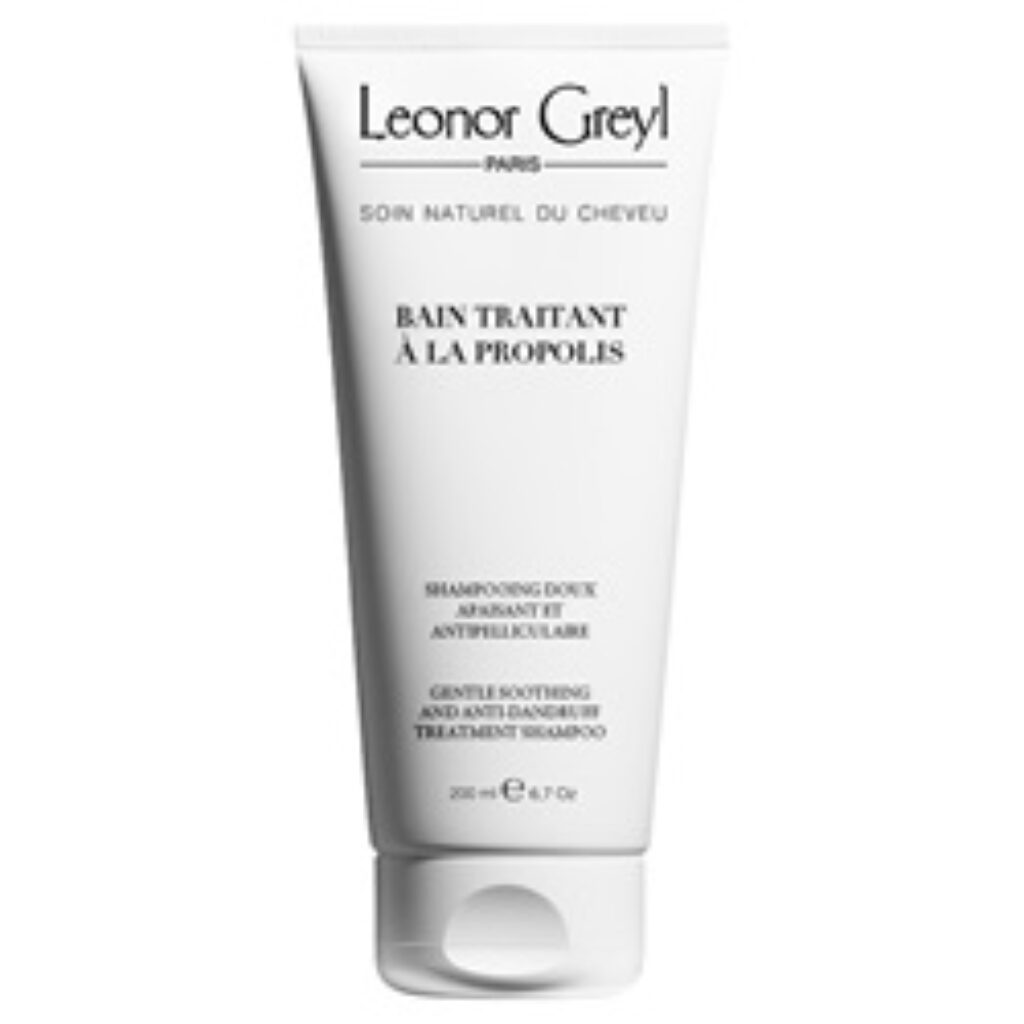
While managing dandruff without washing is possible for temporary fixes, it’s important to know when to consult a healthcare professional:
- Your dandruff is severe and doesn’t improve with over-the-counter medicated shampoos/treatments after a few weeks.
- Your scalp is extremely red, swollen, or painful.
- You have signs of infection (e.g., pus, crusting).
- The itching is intense and interfering with your sleep or daily life.
- You suspect you might have a different scalp condition (like psoriasis, eczema, or a fungal infection like ringworm).
A dermatologist can properly diagnose your condition and recommend stronger prescription treatments if necessary.
Conclusion
Living with dandruff can be annoying, especially when flakes appear between your regular washes. While washing with a medicated shampoo is the gold standard for treating the underlying cause, you do have options for how to remove dandruff without washing hair for those immediate, visible fixes. Gentle brushing, targeted dry shampoos or sprays with beneficial ingredients, and careful spot treatments can offer temporary relief and help you feel more comfortable and confident. Remember that these are band-aid solutions; for long-term success, address the root cause with proper scalp care and potentially medicated treatments. By combining effective management strategies with smart temporary fixes, you can keep those pesky flakes under better control. Read more about irritating itch, dry or dandruff hair here.



